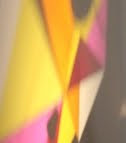when arkansas looked at paris... (maybe)


i remember way back in undergraduate school, i took a history of photography class while studying in paris. i remember spending an entire day talking about a photo by alfred steiglitz of people on a ship, dissecting every person, every thing as being part of a kind of implied drama or narrative. when i saw this cabinet photo of people at the entrance of eureka springs, arkansas it reminded me not only of the steiglitz image, but also a number of classical paintings where each figure has more weight in its relationship to another, than by itself.
if one were looking at this the way we spoke about steiglitz, then one could see somehow that the black umbrella behind the boy is a kind of void or hole and perhaps suggests, as he is the youngest in the image, a symbol of birth, youth, and life. he's holding a hat that seems of a man, suggesting a trajectory through life, his eventual becoming a man; and his glance to the side, away from the people, and towards an unknown future. as one drifts to the left to the second umbrella one sees it not as a protector or a void, but as a container, a bowl in its upside down-ness. here one wonders if the object has been left to capture the sunlight rather than to reflect it, and so when the lady sitting next to it stands up and places it over her head, she not only protects herself from what will be above, but fills herself with all that has rested within her umbrella, filling or coating her with some syrupy glow from the sky...
so much of this image is about the gazes, and how other than the couple in front, none of the people seem to be looking at the same thing, or even each other, which led me to map the lines from their eyes to see what kind of linear image their gazes would form...
in terms of a cabinet photo, this image is pretty complex and awkward - clearly posed, but clearly intended to seem candid, and certainly outside of the ordinary language and composition of the bulk of cabinet photos i've seen.
it was the presence of the umbrellas, as well as the "era" in which the photo was taken that suggested seurat to me. could it be a coincidence that this photo was taken only a few years after seurat had finished his masterpiece in 1886? i wonder if images of this french painting traveled to rural america in the late 1880's, and if so, how it might have found its way to inspire a photographer to arrange arkansas-ians in such a way that they feel connected to the classical language of france, as participants in an allegorical drama.
in that same photo class we spent an inordinate amount of time discussing the moment when photography and painting were at odds over the value and place of photography within the fine art establishment. here, painting is clearly at its modernist beginnings, while photography is trying to find a first voice that could be wholly its own. this photograph is modern, not in terms of it's visual language as much as in the creation of a composition that speaks about things beneath its surface - relationships, feelings, moods, and unspoken stories. here, photography doesn't try to mirror the contemporary language of painting (i.e. it doesn't fuzz itself up to look like a painting), but exploits what photography could, perhaps, do better at the time - reveal an image as it is in the world, and to allow the clarity of that image to speak about things beyond what is seen - suggesting the potential of what can be revealed by simply looking at the real...
of course, while the things within the photograph are real, their placement and implied connections are wholly the work of the photographer's compositional direction, and one could probably talk about what is constructed and what is "real" until one is blue in the face. nonetheless, in many ways, i believe this photograph of the entrance to eureka springs is as complex and modern as seurat's painting, if not more so, in the way it that it suggests or implies various narratives and stories - using the way a complex classical composition can be thrust into the present, through the re-presentation of the very real contemporary visual language of the moment.
of course, the argument for this photograph as something modern is intuitive and unresolved. one could see the image as looking backwards to a painter like j.l. david; or looking forwards, evoking the surrealist tendencies and languages that would crop up in the paintings of delvaux, magritte and de chirico, a few decades later.
i love how certain images send you down paths you never thought you were interested in. these discussions around photography and painting had me bored to tears in school, and as much as i have become interested in the history of photography, it's relationship to painting is of little concern to me. but images tend to bring out of one's mind these things that lay dormant for ages, and so one has no choice but to go where the image takes them. i must say that in the end, i do love this photograph for reasons i couldn't begin to express in words, and mostly i am wondering what might've been beyond the turnstile, and also perhaps, the sound, and the song, of the clarinet...
Labels: cabinet photo, cdv, eureka springs arkansas, manet, painting and photography, seurat




2 Comments:
The little boy has been roped in to some humorous adult exercise, which he feels not great enthusiasm for. The adults are enjoying their cultural tabeau, though.
I wouldn't worry about the moon
Post a Comment
<< Home